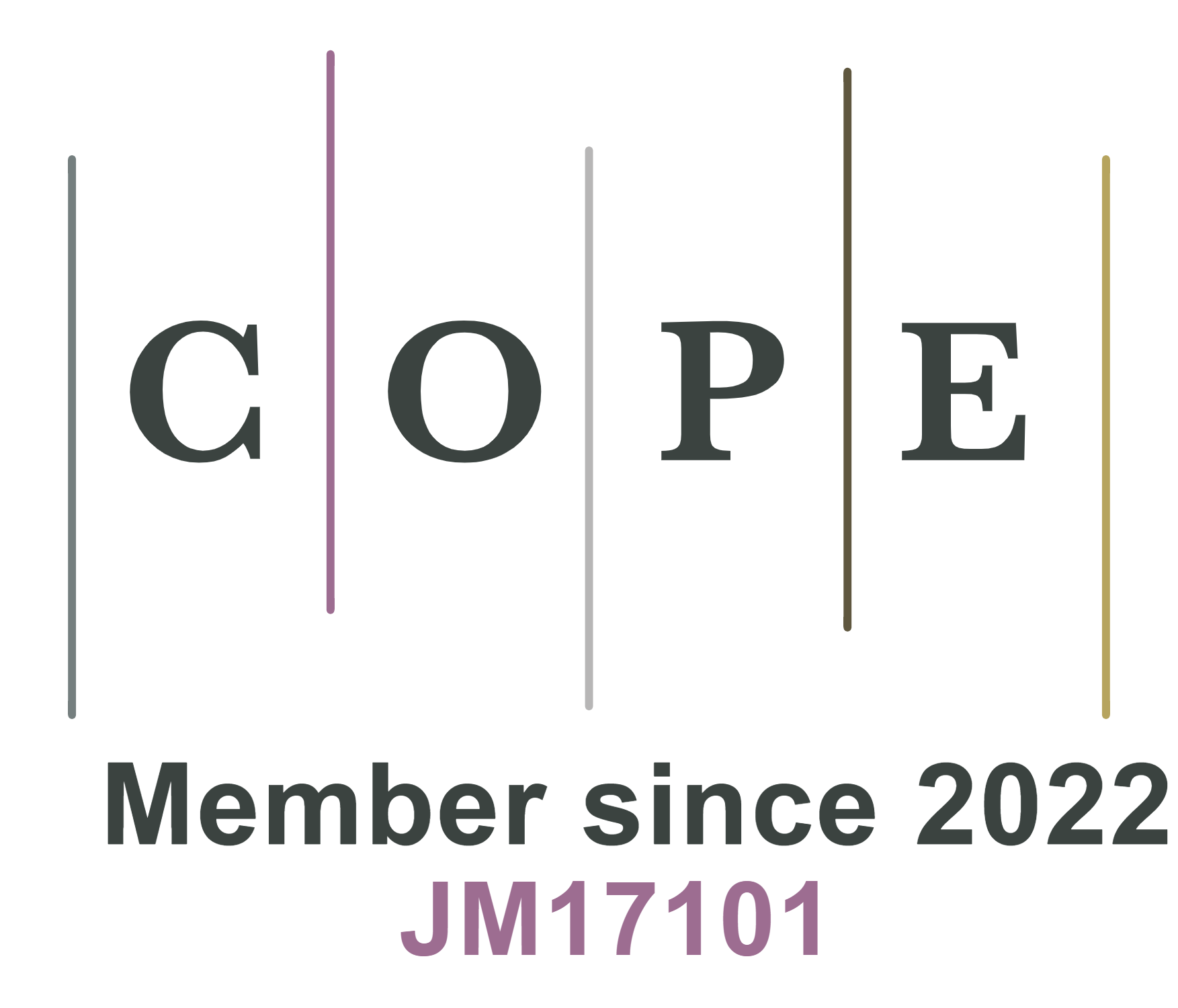REFERENCES
1. Delmas C. Sodium and sodium-ion batteries: 50 years of research. Adv Energy Mater 2018;8:1703137.
2. Roose B, Tennyson EM, Meheretu G, et al. Local manufacturing of perovskite solar cells, a game-changer for low- and lower-middle income countries? Energy Environ Sci 2022;15:3571-82.
3. Sadeghi G. Energy storage on demand: thermal energy storage development, materials, design, and integration challenges. Energy Storage Mater 2022;46:192-222.
4. Feng X, Fang H, Wu N, et al. Review of modification strategies in emerging inorganic solid-state electrolytes for lithium, sodium, and potassium batteries. Joule 2022;6:543-87.
5. Shi Q, Zheng B, Zheng Y, et al. Co-benefits of CO2 emission reduction from China’s clean air actions between 2013-2020. Nat Commun 2022;13:5061.
6. Pan Z, Liu X, Yang J, et al. Aqueous rechargeable multivalent metal-ion batteries: advances and challenges. Adv Energy Mater 2021;11:2100608.
7. Wang B, Zhang Z, Yuan F, et al. An insight into the initial Coulombic efficiency of carbon-based anode materials for potassium-ion batteries. Chem Eng J 2022;428:131093.
8. Hu Y, Yu Q, Tang W, et al. Ultra-stable, ultra-long-lifespan and ultra-high-rate Na-ion batteries using small-molecule organic cathodes. Energy Storage Mater 2021;41:738-47.
9. Li Y, Du YF, Sun GH, et al. Self-standing hard carbon anode derived from hyper-linked nanocellulose with high cycling stability for lithium-ion batteries. EcoMat 2021;3:e12091.
10. Liang J, Deng W, Zhou X, et al. High Li-ion conductivity artificial interface enabled by Li-grafted graphene oxide for stable Li metal pouch cell. ACS Appl Mater Interfaces 2021;13:29500-10.
11. Hu J, Jiang Y, Li L, et al. A lithium feedstock pathway: coupled electrochemical extraction and direct battery materials manufacturing. ACS Energy Lett 2022;7:2420-7.
12. Li Y, Chen M, Liu B, et al. Heteroatom doping: an effective way to boost sodium ion storage. Adv Energy Mater 2020;10:2000927.
13. Wu J, Ihsan-Ul-Haq M, Ciucci F, Huang B, Kim J-K. Rationally designed nanostructured metal chalcogenides for advanced sodium-ion batteries. Energy Storage Mater 2021;34:582-628.
14. Ding J, Hu W, Paek E, Mitlin D. Review of hybrid ion capacitors: from aqueous to lithium to sodium. Chem Rev 2018;118:6457-98.
15. Cai P, Zou K, Deng X, et al. Comprehensive understanding of sodium-ion capacitors: definition, mechanisms, configurations, materials, key technologies, and future developments. Adv Energy Mater 2021;11:2003804.
16. Deng X, Zou K, Cai P, et al. Advanced battery-type anode materials for high-performance sodium-ion capacitors. Small Methods 2020;4:2000401.
17. Li P, Kim H, Ming J, et al. Quasi-compensatory effect in emerging anode-free lithium batteries. eScience 2021;1:3-12.
18. Zhao-Karger Z, Gao P, Ebert T, et al. New organic electrode materials for ultrafast electrochemical energy storage. Adv Mater 2019;31:1806599.
19. Fang Y, Yu X-Y, Lou XW. Nanostructured electrode materials for advanced sodium-ion batteries. Matter 2019;1:90-114.
20. Tang J, Huang X, Lin T, et al. MXene derived TiS2 nanosheets for high-rate and long-life sodium-ion capacitors. Energy Storage Mater 2020;26:550-9.
21. Tang J, Peng X, Lin T, et al. Confining ultrafine tin monophosphide in Ti3C2Tx interlayers for rapid and stable sodium ion storage. eScience 2021;1:203-11.
22. Sun D, Luo B, Wang H, et al. Engineering the trap effect of residual oxygen atoms and defects in hard carbon anode towards high initial Coulombic efficiency. Nano Energy 2019;64:103937.
23. Jin MY, Guo K, Xiao X, et al. Optimum particle size in silicon electrodes dictated by chemomechanical deformation of the SEI. Adv Funct Mater 2021;31:2010640.
24. He H, Sun D, Tang Y, Wang H, Shao M. Understanding and improving the initial Coulombic efficiency of high-capacity anode materials for practical sodium ion batteries. Energy Storage Mater 2019;23:233-51.
25. Wan Y, Song K, Chen W, et al. Ultra-high initial coulombic efficiency induced by interface engineering enables rapid, stable sodium storage. Angew Chem Int Ed 2021;60:11481-6.
26. Ren Q, Wang J, Yan L, et al. Manipulating free-standing, flexible and scalable microfiber carbon papers unlocking ultra-high initial Coulombic efficiency and storage sodium behavior. Chem Eng J 2021;425:131656.
27. Tang Y, Wang X, Chen J, Wang D, Mao Z. Synthesis of presodiated B, N Co-doped carbon materials and application in sodium ions batteries with enhanced initial coulombic efficiency. Chem Eng J 2022;427:131951.
28. Zhang H, Zhang W, Huang F. Graphene inducing graphitization: towards a hard carbon anode with ultrahigh initial coulombic efficiency for sodium storage. Chem Eng J 2022;434:134503.
29. Lyu T, Liang L, Kang Shen P. Hollow porous carbon spheres for high initial coulombic efficiency and low-potential sodium ion storage. J Colloid Interface Sci 2021;604:168-77.
30. Liu M, Zhang J, Guo S, et al. Chemically Presodiated hard carbon anodes with enhanced initial coulombic efficiencies for high-energy sodium ion batteries. ACS Appl Mater Interfaces 2020;12:17620-27.
31. Zou K, Cai P, Tian Y, et al. Voltage-induced high-efficient in situ presodiation strategy for sodium ion capacitors. Small Methods 2020;4:1900763.
32. Liu X, Tan Y, Liu T, et al. A Simple electrode-level chemical presodiation route by solution spraying to improve the energy density of sodium-ion batteries. Adv Funct Mater 2019;29:1903795.
33. Zou K, Deng W, Cai P, et al. Prelithiation/presodiation techniques for advanced electrochemical energy storage systems: concepts, applications, and perspectives. Adv Funct Mater 2021;31:2005581.
34. Liu Y, Bai M, Wang H, et al. Capillary force induced the sodium metal infusion in the Sn@HCNF scaffold: A mechanical flexible metallic battery. J Power Sources 2022;545:231885.
35. Dewar D, Glushenkov AM. Optimisation of sodium-based energy storage cells using pre-sodiation: a perspective on the emerging field. Energy Environ Sci 2021;14:1380-401.
36. Zhang T, Wang R, He B, et al. Recent advances on pre-sodiation in sodium-ion capacitors: a mini review. Electrochem Commun 2021;129:107090.
37. Chojnacka A, Pan X, Bachetzky C, Brunner E, Béguin F. A strategy for optimizing the output energy and durability of metal-ion capacitors fabricated with alloy-based anodes. Energy Storage Mater 2022;51:719-32.
38. Yang F, Ding R, Jia Z, et al. High specific energy and power sodium-based dual-ion supercabatteries by pseudocapacitive Ni-Zn-Mn ternary perovskite fluorides@reduced graphene oxides anodes with conversion-alloying-intercalation triple mechanisms. Energy Storage Mater 2022;53:222-37.
39. Zhao J, Sun J, Pei A, et al. A general prelithiation approach for group IV elements and corresponding oxides. Energy Storage Mater 2018;10:275-81.
40. Yang S-Y, Yue X-Y, Xia H-Y, et al. Battery prelithiation enabled by lithium fixation on cathode. J Power Sources 2020;480:229109.
41. Sun Y, Lee H-W, Seh ZW, et al. High-capacity battery cathode prelithiation to offset initial lithium loss. Nature Energy 2016;1:15008.
42. Li F, Cao Y, Wu W, Wang G, Qu D. Prelithiation bridges the gap for developing next-generation lithium-ion batteries/capacitors. Small Methods 2022;6:2200411.
43. Song Z, Zou K, Xiao X, et al. Presodiation strategies for the promotion of sodium-based energy storage systems. Chem A Eur J 2021;27:16082-92.
44. Liu W, Liu P, Mitlin D. Review of emerging concepts in SEI analysis and artificial SEI membranes for lithium, sodium, and potassium metal battery anodes. Adv Energy Mater 2020;10:2002297.
45. Ji L, Gu M, Shao Y, et al. Controlling SEI formation on SnSb-Porous carbon nanofibers for improved Na ion storage. Adv Mater 2014;26:2901-8.
46. Zhang J, Zhang K, Yang J, et al. Engineering solid electrolyte interphase on red phosphorus for long-term and high-capacity sodium storage. Chem Mater 2020;32:448-58.
47. Darwiche A, Bodenes L, Madec L, Monconduit L, Martinez H. Impact of the salts and solvents on the SEI formation in Sb/Na batteries: an XPS analysis. Electrochim Acta 2016;207:284-92.
48. Zhao Y, Yang X, Kuo L-Y, et al. High capacity, dendrite-free growth, and minimum volume change na metal anode. Small 2018;14:1703717.
49. Lao M, Zhang Y, Luo W, et al. Alloy-based anode materials toward advanced sodium-ion batteries. Adv Mater 2017;29:1700622.
50. Nazarian-Samani M, Nazarian-Samani M, Haghighat-Shishavan S, Kim K-B. Predelithiation-driven ultrastable Na-ion battery performance using Si,P-rich ternary M-Si-P anodes. Energy Storage Mater 2022;49:421-32.
51. Sun B, Li P, Zhang J, et al. Dendrite-free sodium-metal anodes for high-energy sodium-metal batteries. Adv Mater 2018;30:1801334.
52. Chen QD, Yuan SF, Dai JH, Song Y. Functionalized M2TiC2Tx MXenes (M = Cr and Mo; T = F, O, and OH) as high performance electrode materials for sodium ion batteries. Phys Chem Chem Phys 2021;23:1038-49.
53. Xie B, Zuo P, Wang L, et al. Achieving long-life Prussian blue analogue cathode for Na-ion batteries via triple-cation lattice substitution and coordinated water capture. Nano Energy 2019;61:201-10.
54. Xie F, Xu Z, Jensen ACS, et al. Hard-soft carbon composite anodes with synergistic sodium storage performance. Adv Funct Mater 2019;29:1901072.
55. Li Q, Zhu Y, Zhao P, et al. Commercial activated carbon as a novel precursor of the amorphous carbon for high-performance sodium-ion batteries anode. Carbon 2018;129:85-94.
56. Lu H, Chen X, Jia Y, et al. Engineering Al2O3 atomic layer deposition: enhanced hard carbon-electrolyte interface towards practical sodium ion batteries. Nano Energy 2019;64:103903.
57. Chen C, Huang Y, Zhu Y, et al. Nonignorable influence of oxygen in hard carbon for sodium ion storage. ACS Sustain Chem Eng 2020;8:1497-506.
58. Qi Y, Li J, Zhong W, Bao S, Xu M. KTiOPO4: a long-life, high-rate and low-temperature-workable host for Na/K-ion batteries. Chem Eng J 2021;417:128159.
59. Jo JH, Choi JU, Park YJ, et al. A new pre-sodiation additive for sodium-ion batteries. Energy Storage Mater 2020;32:281-9.
60. Sun C, Zhang X, Li C, et al. A safe, low-cost and high-efficiency presodiation strategy for pouch-type sodium-ion capacitors with high energy density. J Energy Chem 2022;64:442-50.
61. Shen B, Zhan R, Dai C, et al. Manipulating irreversible phase transition of NaCrO2 towards an effective sodium compensation additive for superior sodium-ion full cells. J Colloid Interface Sci 2019;553:524-9.
62. Zhang Q, Gao X-W, Shi Y, et al. Electrocatalytic-driven compensation for sodium ion pouch cell with high energy density and long lifespan. Energy Storage Mater 2021;39:54-9.
63. Liu X, Tan Y, Wang W, et al. Ultrafine sodium sulfide clusters confined in carbon nano-polyhedrons as high-efficiency presodiation reagents for sodium-ion batteries. ACS Appl Mater Interfaces 2021;13:27057-65.
64. Pan X, Chojnacka A, Jeżowski P, Béguin F. Na2S sacrificial cathodic material for high performance sodium-ion capacitors. Electrochim Acta 2019;318:471-8.
65. De Ilarduya J, Otaegui L, López del Amo JM, Armand M, Singh G. NaN3 addition, a strategy to overcome the problem of sodium deficiency in P2-Na0.67[Fe0.5Mn0.5]O2 cathode for sodium-ion battery. J Power Sources 2017;337:197-203.
66. Park K, Yu B-C, Goodenough JB. Electrochemical and chemical properties of Na2NiO2 as a cathode additive for a rechargeable sodium battery. Chem Mater 2015;27:6682-8.
67. Zou K, Song Z, Gao X, et al. Molecularly compensated pre-metallation strategy for metal-ion batteries and capacitors. Angew Chem Int Ed 2021;60:17070-9.
68. Zou K, Song Z, Liu H, et al. Electronic effect and regiochemistry of substitution in pre-sodiation chemistry. J Phys Chem Lett 2021;12:11968-79.
69. Song Z, Zhang G, Deng X, et al. Ultra-low-dose pre-metallation strategy served for commercial metal-ion capacitors. Nanomicro Lett 2022;14:53.
70. Ding F, Meng Q, Yu P, et al. Additive-free self-presodiation strategy for high-performance Na-ion batteries. Adv Funct Mater 2021;31:2101475.
71. Mirza S, Song Z, Zhang H, et al. A simple pre-sodiation strategy to improve the performance and energy density of sodium ion batteries with Na4V2(PO4)3 as the cathode material. J Mater Chem A 2020;8:23368-75.
72. Marinaro M, Weinberger M, Wohlfahrt-Mehrens M. Toward pre-lithiatied high areal capacity silicon anodes for Lithium-ion batteries. Electrochim Acta 2016;206:99-107.
73. Liu W, Chen X, Zhang C, et al. Gassing in Sn-anode sodium-ion batteries and its remedy by metallurgically prealloying Na. ACS Appl Mater Interfaces 2019;11:23207-12.
74. Moeez I, Jung H-G, Lim H-D, Chung KY. Presodiation strategies and their effect on electrode-electrolyte interphases for high-performance electrodes for sodium-ion batteries. ACS Appl Mater Interfaces 2019;11:41394-401.
75. Tang J, Kye DK, Pol VG. Ultrasound-assisted synthesis of sodium powder as electrode additive to improve cycling performance of sodium-ion batteries. J Power Sources 2018;396:476-82.
76. Liu Z, Ma S, Mu X, et al. A scalable cathode chemical prelithiation strategy for advanced silicon-based lithium ion full batteries. ACS Appl Mater Interfaces 2021;13:11985-94.
77. Yue H, Zhang S, Feng T, et al. Understanding of the mechanism enables controllable chemical prelithiation of anode materials for lithium-ion batteries. ACS Appl Mater Interfaces 2021;13:53996-4004.
78. Shen Y, Zhang J, Pu Y, et al. Effective chemical prelithiation strategy for building a silicon/sulfur li-ion battery. ACS Energy Lett 2019;4:1717-24.
79. Jang J, Kang I, Choi J, et al. Molecularly tailored lithium-arene complex enables chemical prelithiation of high-capacity lithium-ion battery anodes. Angew Chem Int Ed 2020;59:14473-80.
80. Zheng G, Lin Q, Ma J, et al. Ultrafast presodiation of graphene anodes for high-efficiency and high-rate sodium-ion storage. InfoMat 2021;3:1445-54.
81. Cao Y, Zhang T, Zhong X, Zhai T, Li H. A safe, convenient liquid phase pre-sodiation method for titanium-based SIB materials. Chem Commun 2019;55:14761-4.
82. Zhou J, Ye W, Lian X, et al. Advanced red phosphorus/carbon composites with practical application potential for sodium ion batteries. Energy Storage Mater 2022;46:20-8.










